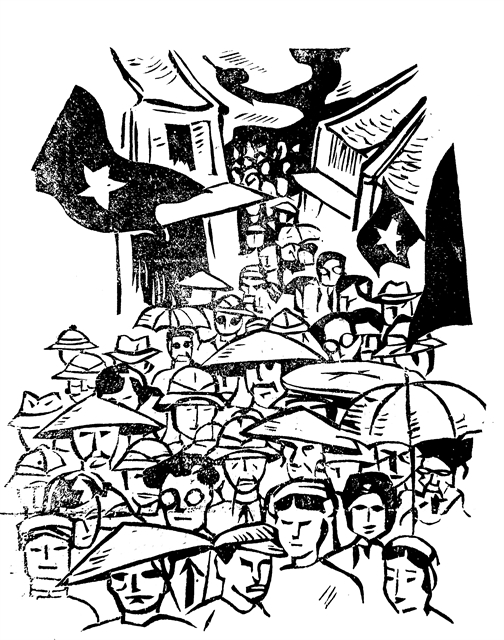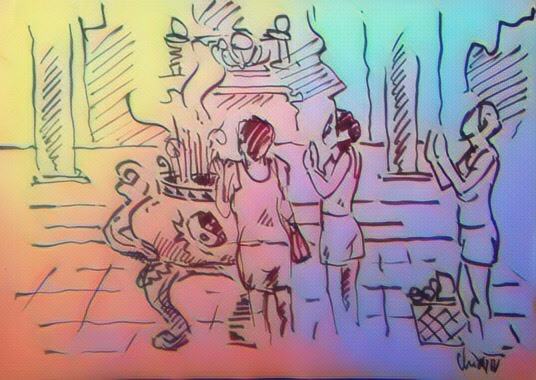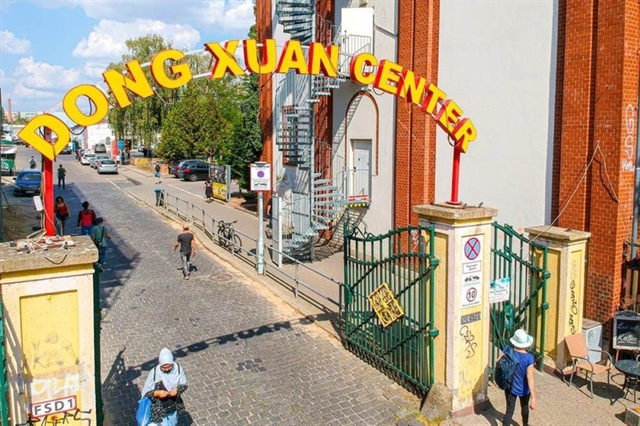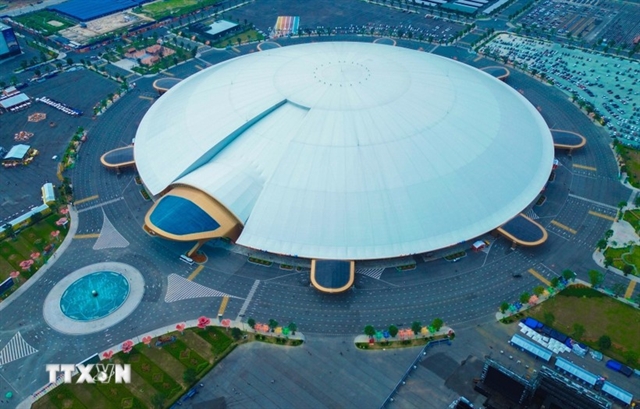 Talk Around Town
Talk Around Town

It’s a story that never seems to go away. Year after year we hear and see the same things. Sacred places are exactly that, sacred. Yet during the New Year festivities some pictures shared on social media show women dressed more for an evening out at a nightclub rather than a visit to a pagoda.
 |
| Illustration by Đàm Minh Chí |
Khánh Linh
It’s a story that never seems to go away. Year after year we hear and see the same things.
Sacred places are exactly that, sacred. Yet during the Tết (Lunar New Year) festivities some pictures shared on social media show women dressed more for an evening out at a nightclub rather than a visit to a pagoda.
Short skirts, mesh tops, even ultra-thin shirts revealing bare backs are more suited to the dancefloor, yet it seems many women believe this is the correct attire to wear during prayer.
The photos have been raising severe online criticism from people who described it as shameful, offensive, and uncivilised.
“I don’t know how they get the courage and inspiration to wear such clothes when entering sacred places. I really don’t understand what’s going on in their mind,” a Facebook user commented.
“How shocking! Why are these images happening year after year? They must be fined for it,” another fumed.
Inappropriately clad visitors have usually been seen at pagodas and temples on the first and the 15th day of lunar calendar in years gone by.
A collection of fashion fails for pagoda goers has even been created on some social websites.
The regulation of dress code at religious sites has never been ignored. The Government’s Decree 110/2018 stipulated people going to sacred places must have respectful and polite costumes, which was suitable to the customs of the country and ensured the solemn atmosphere of the sites.
Fines for violators ranging between VNĐ60,000 (US$2.6) and VNĐ100,000 ($4.3) were once enforced, however they have now been stopped and currently, there are no penalties.
In 2013 when the lawmakers decided to remove the fines, they told the press this was a moral issue that should not have financial penalties. Pagoda visitors should know how to dress properly to go well with the customs of the nation.
Every year, people keep sharing shameful images of inappropriately clad visitors. People are being criticised, on social websites, with their faces being blurred.
In Thailand, Indonesia, Laos and Cambodia, regulations on clothes are quite strict. Most temples require modest dress covering at least legs and shoulders.
Sarong and shirts are available for rent outside worshipping places as shorts, tank tops and short skirts are prohibited.
Visitors with unsuitable clothes will be refused entry.
In Thailand and Cambodia, they might face legal proceedings and could be jailed for a maximum of seven years.
Nguyễn Tiến Đạt, deputy director of TransViet Travel Company who pioneered in building the code of conduct for tourists said Vietnamese people often feared confrontation, especially in spiritual places.
Most turned a blind eye when catching people wearing inappropriate clothes.
On the other hand, most temples had security guards, but they only performed the task of protecting the facilities.
Many spiritual sites don’t have notice boards with rules or instructions on costumes for visitors before entering the temple.
With no warnings, no prevention or sanctions on violators, the situation would never be solved, he said
It is high time lawmakers re-think penalties for such behaviour. Violators must be refused to enter pagodas and temples. Those who try to get in must be strictly and heavily fined.
The initiative of lending visitors a long-sleeved shirt or dress in Hà Nội’s Ngọc Sơn Temple should be expanded in other pagodas and temples, so that visitors with inappropriate clothes can enter the sites with respect for religious traditions. – VNS




